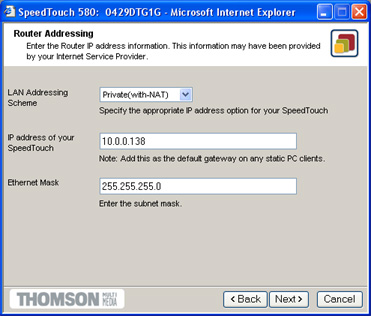So far i have tryed doing a system restore, updated my wireless card drivers, and have done an automatic update from windows. I have a Toshiba laptop, with a thomson router. We changed the password and now, every other device in the house can connect, except mine. Recently upgraded to 50mb speed) I have a ps4, All in 1 PC, 2 Tablets. See the release notes and the readme.txt file for installation instructions, supported hardware, what's new, bug fixes, and known issues. This download installs base drivers, Intel® PROSet for Windows. Device Manager, and Intel® PROSet Adapter Configuration Utility for Intel® Network Adapters with Windows® 10.
This article describes the setup of a WiFi (wireless) network device.
WiFi during installation
Enabling the wireless card allows systems to read chipset information and manufacturer name, as well as connect to a network without using an Ethernet cable. Updating the driver version can resolve different compatibility issues, fix related errors spotted throughout the product’s usage, add. The Thomson Reuters community is your online resource to get answers to your product and industry questions. Connect with other professionals in a trusted, secure environment open to Thomson Reuters customers only. Learn how to setup the Wireless Settings for your Thomson Internet Router from Batelco in easy steps.
If a WiFi connection is needed while installing Gentoo, note that the Gentoo minimal install CD has a limited number of drivers available, and provides only wpa_cli (and not wpa_gui) for configuring for WPA/WPA2/Enterprise connections.
If the minimal install CD does not contain the required drivers or the graphical frontend to wpa_supplicant is preferred, choose a different live CD such as the System Rescue CD. Be aware that some special steps may be required when using a non-Gentoo live CD.
Hardware detection
First detect the WiFi controllers. lspci or lsusb are command-line tools that can be used for this task.
If a Linux (LiveCD/USB) is booted that makes a WiFi connection:
The driver will be identified on one of the lines starting with Kernel driver in use:.
If the booted system does not make a WiFi connection, then obtain a full list of hardware identifiers from the current system. This list can be used to identify the proper driver later:
Copy the list of PCIID's that the command produces and paste it at https://kmuto.jp/debian/hcl/.

For USB devices, a similar approach can be taken. First obtain the list of detected USB devices on the system:
This command produces the PCI ID, manufacturer, make, model, and/or chipset of every USB device attached to the system. Of these, the chipset may be the most useful information. Searching the web for linuxwireless.org <chipset> is often the shortest way to find a USB NIC driver and firmware name.
Thomson Network & Wireless Cards Drivers
Alternatively, lshw can be used to obtain the necessary information:
root #lshw | grep -i driver | perl -pe 's/^.*driver=(S+).*$/$1/g;' | sort -uThis command produces a list of all drivers, regardless of the device being PCI or USB based.
Kernel
With the drivers identified, it is time to configure the Linux kernel.
IEEE 802.11
Activate at least cfg80211 and mac80211.
Minstrel and its 802.11n support is a rate control algorithm. Some wireless drivers might require it enabled.
In case the wireless configuration API (CONFIG_CFG80211) is built into the kernel (
<*>) instead as a module (<M>), the driver won't be able to load regulatory.db from /lib/firmware resulting in broken regulatory domain support. Please set CONFIG_CFG80211=m or add regulatory.db and regulatory.db.p7s to CONFIG_EXTRA_FIRMWARE.WEXT
The 'cfg80211 wireless extensions compatibility' option aka WEXT will support old wireless-tools and iwconfig.
Device drivers
Next the right set of corresponding kernel options need to be enabled, based on the drivers and hardware detected previously. The recommendation is to build drivers as modules. Also be sure to enable AES cipher support in the kernel if the wireless network uses WPA or WPA2 encryption.

In case the driver is built into the kernel (
<*>) instead of as a module (<M>), then the firmware needs to be built into the kernel as well.Do not forget to rebuild the kernel after changing its configuration.
LED support
To enable LED triggers for different packet receive/transmit events, compile the kernel with the following options:
Firmware
In addition to the kernel driver, some chipsets also require firmware. If required, locate it on the following list and install it:
| WiFi device | Driver | Firmware | Note |
|---|---|---|---|
| Atheros AR9271 & AR7010 | ath9k_htc | sys-kernel/linux-firmware | |
| Broadcom 43xx wireless support | b43 / b43legacy | sys-firmware/b43-firmware | Aircrack-ng ready, most probably the best choice if your bcm43xx device is supported |
| Broadcom PCIe and SDIO/USB devices | brcmsmac / brcmfmac | sys-kernel/linux-firmware | Lacks powersaving, LED support and other features |
| Broadcom 43xx wireless support | wl | net-wireless/broadcom-sta | Proprietary, no AP or Monitor modes, Comparison of bcm43xx drivers |
| Intel PRO/Wireless 2200BG | ipw2200 | sys-firmware/ipw2200-firmware | |
| Intel PRO/Wireless 3945ABG/BG | iwlegacy | sys-kernel/linux-firmware | |
| Intel Wireless WiFi 4965AGN | iwl4965 | sys-kernel/linux-firmware | |
| All other Intel Wireless devices | iwlwifi | sys-kernel/linux-firmware | See the iwlwifi article for detailed instructions. |
| Qualcomm Atheros QCA6174 | ath10k_pci | ath10k-firmware | See Qualcomm_Atheros_QCA6174#Firmware |
| Ralink/MediaTek USB devices | e.g. rt2800usb | sys-kernel/linux-firmware | |
| Realtek RTL8191SE & RTL8192SE | rtl8192se | sys-kernel/linux-firmware | |
| Realtek 8723AU/8723BU/8191EU/8192EU/8188EU/8188RU | rtl8xxxu | sys-kernel/linux-firmware | May need the CONFIG_RTL8XXXU_UNTESTED kernel option to find all devices. Only those verified by kernel developers are enabled by default. |
If the driver requires firmware but does not appear on the list, it will be necessary to download it manually and place it in /lib/firmware.
Network device names
Network device names such as eth0 or wlan0 as provided by the kernel are normally changed on system boot (see dmesg) by the /lib/udev/rules.d/80-net-name-slot.rules udev rule.
To keep the classic naming this rule can be overwritten with an equally named empty file in the /etc/udev/rules.d directory:
root #touch /etc/udev/rules.d/80-net-name-slot.rulesWireless supplicant
If the wireless network is set up with WPA or WPA2, then a wireless supplicant like wpa_supplicant or iwd needs to be used. For more information on configuring wireless networking in Gentoo Linux, please read the Wireless networking chapter in the Gentoo Handbook.
Testing
After a reboot with the new kernel or after loading the modules, the device can be checked for availability by using following methods:
- Using the /sys file system
- Using the ip command
- Using the ifconfig command
- Using the iw command
/sys file system
Get the device name by listing the /sys/class/net directory contents using ls -al or the tree command (provided by the app-text/tree package):
Amazon Wireless Network Card
ip command
To obtain the device name and verify that the wireless card is detected, execute the following ip command:
ifconfig command
The ifconfig command is provided through the sys-apps/net-tools package. Use ifconfig -a to list all detected network cards, even those that are not enabled/active yet:
A network card can be activated as follows:
In this example, enabling the wireless card failed as a radio frequency kill state is set (usually to keep power consumption at bay and not connect by accident to a wireless network).
iw command
If the wireless network card driver supports the nl80211 stack, then the iw command as offered by the net-wireless/iw package can show the detected wireless cards:
dmesg

Check the output of dmesg.

Be sure to replace
xx:xx.xwith the identifier (PCIID) from lspci,wlanwith the network interface name andiwlwith the name of theKernel driver in use.
Troubleshooting
- Forum thread: wireless lan can't get ip from access point which explains about 169.254.x.x (link local address) being a wrong IP address
See also
- Iproute2 — a tool developed to unify network interface configuration, routing, and tunneling.
- Iwlwifi — the wireless driver for Intel's current wireless chips.
- Qualcomm Atheros QCA6174 — a 802.11ac Wireless Network Adapter which is used in some laptops.
External resources
- Wireless network configuration at ArchLinux
| Type | Private |
|---|---|
| Industry | ICT - Broadcast and Media |
| Headquarters | Rennes, France |
| Products | Video encoding and transcoding, contribution codec, video streaming, stream processing, video servers, QoS & network management system |
Number of employees | 400 (approx) |
| Website | www.thomson-networks.com |
Thomson Video Networks is a technology broadcast company that provides video compression, transcoding and processing solutions[buzzword] for media companies, video service providers, and TV broadcasters. The firm has offices in 16 countries and headquarters in Rennes, France.
History[edit]
The company has been established in the video delivery domain since the late 1980s when the Motion Picture Experts Group (MPEG) was created with the purpose of deriving a standard for the coding of moving pictures and audio. As a video headend division of the French electronics Thomson group, now known as Technicolor SA, the company developed and manufactured MPEG-2 and MPEG-4/AVC video encoding and networking equipment based on advanced compression algorithms. Since 2011, the division has become an independent private held company with a financial structure backed by the public/private Venture Capital, FCDE.[1][2]
Its products include High Definition (HD) / Standard Definition (SD) broadcast and multi-screen video encoding, decoding, transcoding, multiplexing, redundancy and network management, as well as video stream server for contribution, terrestrial, satellite, cable, IPTV, and OTT services.
The firm participates in the development and definition of the High Efficiency Video Coding (HEVC) compression standard.[3] The HEVC standard aims at obtaining a bit-rate reduction of up to 50 percent compared to the current H.264 compression format, and paves the way for broadcasting in the Ultra high definition television (Ultra HD) picture format.[4] The firm is a member of broadcasting associations such as ATSC, MPEG-DASH Industry Forum, DVB, IABM, MPEG, OMA, SCTE, SMPTE, as well as a founding member of the French Research Institute B-Com.[5]
As of March 2016 Thomson Video Networks has been acquired by Harmonic Inc..[6]
Products[edit]
- ViBE EM series of HD/SD MPEG-2/MPEG-4 AVC Broadcast Encoder
- ViBE VS7000 Multi-screen & HEVC Encoder & Transcoder
- ViBE CP6000 Contribution Encoder & Decoder
- NetProcessor Video Processing & Multiplexing Platform
- Sapphire Channel In A Box MPEG Stream Server
- Amethyst IP/ASI Redundancy Switch
- XMS Network Management System
References[edit]
- ^'Technicolor Sells Off Thomson Video Networks'. 9 March 2011.
- ^'FCDE To Acquire Thomson Video Networks'. 9 March 2011.
- ^'Thomson Video Networks unveils HEVC support for ViBE VS7000'. 26 August 2013.
- ^'Thomson Video Networks touts HEVC ultra HD trial'. 6 September 2013.
- ^'Thomson Video Networks, une ETI chez B-Com'. March 2013.
- ^'Harmonic Completes Acquisition of Thomson Video Networks'. March 2016.
Wireless Network Card For Sale
